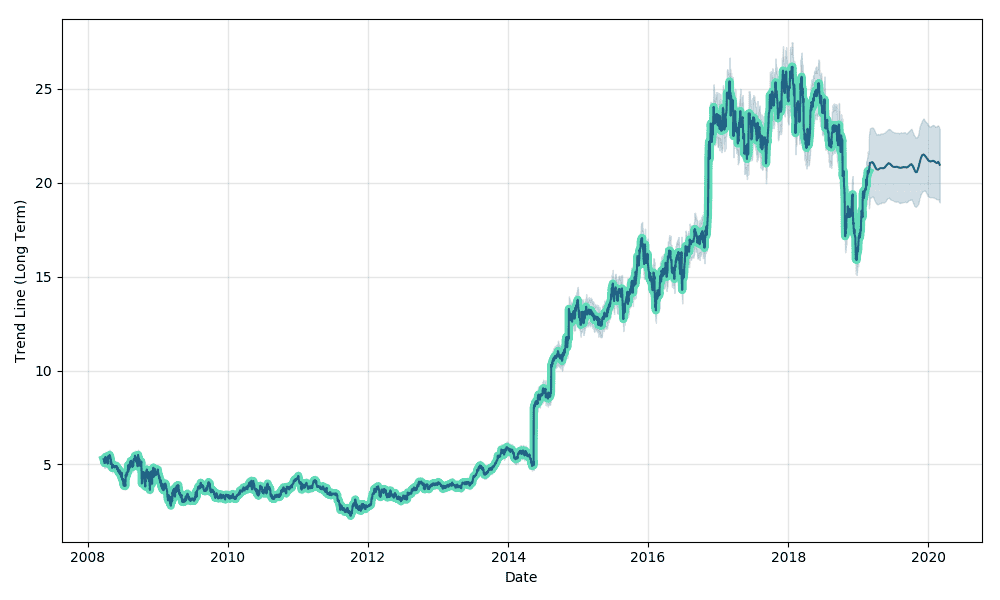
Sterling Bancorp (STL) stock rate ended its day with loss -0.68% and finalized at the rate of $20.44, its fifty two week- top price and modified 30.86% from its fifty two week-low price. Throughout its closing trading session, stock traded with the total exchanged volume of 3.31 million stocks. The average volume stands round 3.07 million shares. The average numbers of shares are traded in a protection consistent with day, in the course of the latest three-month duration. The stock has relative volume of 1.09. Relative volume is ratio between modern extent and three-month average value, intraday adjusted.
The Corporation gives a ROE of 5.20%. The higher the ROE, the higher the business enterprise is at generating earnings. ROI is 11.00%. An effective end result manner that returns exceed cost. Analysts therefore don’t forget the funding a net advantage. The alternative end result, a bad means that costs outweigh returns. Analysts consequently view the investment as a net loss. Return on Assets (ROA) ratio indicates how profitable an employer is relative to its overall belongings. The ROA is 0.70%. An enterprise that manages their property nicely may have a high go back, while if manages their belongings poorly can have a low return.
ATR price of agency become 0.45. Common genuine variety (ATR) is a trademark based totally on buying and selling ranges smoothed by using an N-period exponential shifting average percent of the genuine range values. ATR can show volatility of stocks, ETFs and indexes. The major of ATR may be very much like different volatility indicators: An excessive ATR cost signals a probable fashion exchange. A low ATR price correlates with a weaker trend motion.
To check the STL previous performance, study its past history, which highlighted underneath: in the course of final 5 trades the stock sticks nearly 1.09%. All through last one month it showed the alternate of 8.26%. In the course of remaining three month it remained at 13.37%. In the course of remaining 12 month it moved at -14.48%. In conjunction with those its year so far overall performance is standing at 23.80%.
In USA industry, Sterling Bancorp (STL) have 216.65 million outstanding shares currently held by using all its shareholders, including share blocks held by using institutional investors and limited shares owned via the organization’s officials and insiders. The business enterprise has shares float of 212.25 million. Flow is the wide variety of shares available for buying and selling of a particular stock. Floating stock is calculated via subtracting closely-held shares and confined stock from a company’s overall superb shares. Closely-held stocks are those owned by using insiders, main shareholders and personnel, whilst restricted stock refers to insider stocks that cannot be traded due to a transient limit which include the lock-up period after an preliminary public providing. A stock with a small waft will normally be extra risky than a stock with a massive waft, other than having restrained liquidity and wider bid-ask unfold. Because of those problems, institutional investors seldom invest in low-glide shares.
Analysts’ imply advice for Sterling Bancorp (STL) stands at 1.70. score Scale; where 1.0 score way strong purchase, 2.0 rating characterize buy, 3.0 advice exhibits hold, 4.0 rating shows promote and 5.0 shows sturdy sell sign.
USA based enterprise, Sterling Bancorp (STL)’s cutting-edge remaining charge distance turned into -3.15% from the common-rate of 200 days at the same time as it maintained a distance from the 50 Day moving common at 12.04% and 2.82% compared with the 20 Day transferring average.
The stock weekly volatility remained at 2.28% at the same time as volatility is status at 2.01% for the month. Volatility refers to the quantity of uncertainty or hazards approximately the dimensions of changes in a safety’s fee. A higher volatility way that a security’s value can potentially be unfolds out over a bigger variety of values. This means that the price of the security can alternate dramatically over a brief term in both routes. A lower volatility manner that a security’s price does no longer fluctuate dramatically, but changes in fee at a consistent tempo over a time period. Typically, the higher the volatility, the riskier the security.


